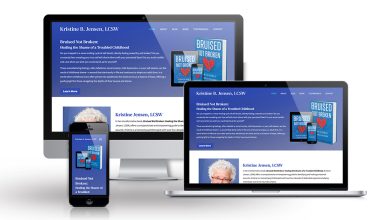Understanding Warehouse Kitting: A Comprehensive Guide to Optimizing Your Fulfillment Process

In the evolving landscape of logistics and supply chain management, warehouse kitting is a critical process that significantly impacts efficiency and customer satisfaction. This article provides an in-depth exploration of warehouse kitting, its importance, the benefits it offers, and how to implement it effectively to optimize your fulfillment process.
What is Warehouse Kitting?
Warehouse kitting is the process of assembling individual items into a single kit or bundle, which is then shipped to customers as a single unit. This process often involves grouping related products together, pre-packaging them, and preparing them for shipment. Kitting is commonly used in various industries, including retail, manufacturing, and e-commerce, to streamline order fulfillment and enhance the customer experience.
How Warehouse Kitting Works
- Product Selection: The process begins with selecting the individual items that will be included in the kit. This can be based on customer orders, inventory levels, or promotional offers.
- Assembly: Once the products are selected, they are assembled into kits. This may involve picking items from different locations within the warehouse and combining them into a single package.
- Packaging: The assembled kits are then packaged and labeled. Packaging materials are chosen to ensure that the kit is protected during transit and that it meets branding and presentation standards.
- Quality Control: Quality control checks are performed to ensure that the correct items are included in each kit and that the packaging is intact.
- Shipping: The final step involves shipping the kits to customers or retail locations, often as part of a larger order fulfillment process.
Benefits of Warehouse Kitting
Implementing warehouse kitting offers numerous advantages that can enhance your logistics operations and contribute to overall business success:
1. Improved Efficiency
How It Improves Efficiency:
- Reduced Picking Time: Kitting reduces the time spent picking individual items by allowing warehouse staff to assemble kits in bulk. This streamlines the picking process and minimizes the number of trips required.
- Streamlined Packaging: Pre-assembled kits simplify packaging, as items are already grouped together. This reduces the need for complex packaging processes and speeds up order fulfillment.
2. Enhanced Accuracy
How It Enhances Accuracy:
- Minimized Errors: By assembling kits in advance, the risk of errors associated with picking and packing individual items is reduced. This leads to fewer mistakes and more accurate orders.
- Consistent Kits: Kitting ensures that each kit contains the same items in the correct quantities, providing consistency and reducing discrepancies.
3. Cost Savings
How It Saves Costs:
- Lower Labor Costs: Streamlining the picking and packing process reduces labor requirements, leading to lower labor costs.
- Efficient Inventory Management: Kitting helps optimize inventory levels by consolidating related items into kits, reducing the need for excess stock.
4. Enhanced Customer Experience
How It Enhances Customer Experience:
- Faster Fulfillment: Pre-assembled kits enable quicker order fulfillment, leading to faster delivery times and improved customer satisfaction.
- Professional Presentation: Well-packaged kits contribute to a professional and attractive presentation, enhancing the perceived value of the products.
5. Flexibility for Promotions and Customization
How It Provides Flexibility:
- Promotional Offers: Kitting allows for easy creation of promotional bundles and special offers, helping to drive sales and attract customers.
- Custom Kits: Businesses can create custom kits tailored to specific customer needs or preferences, adding a personalized touch to the shopping experience.
Types of Warehouse Kitting
Warehouse kitting can be categorized into various types based on the purpose and nature of the kits. Here are some common types:
1. Standard Kits
Description: Standard kits consist of a fixed set of items that are consistently assembled in the same configuration. These kits are often used for routine orders or regular inventory items.
Examples: Product bundles, subscription boxes, and gift sets.
2. Custom Kits
Description: Custom kits are assembled based on specific customer requirements or preferences. These kits allow for greater flexibility and personalization.
Examples: Personalized gift baskets, customized promotional packages, and special event kits.
3. Promotional Kits
Description: Promotional kits are designed for marketing and promotional purposes. They often include a combination of products offered at a discounted price or as part of a special offer.
Examples: Seasonal promotions, limited-time offers, and trade show giveaways.
4. Assembly Kits
Description: Assembly kits include components or parts required to assemble a final product. These kits are commonly used in manufacturing and assembly operations.
Examples: DIY furniture kits, electronic assembly kits, and construction project kits.
Implementing Warehouse Kitting: Best Practices
To effectively implement warehouse kitting and optimize your fulfillment process, consider the following best practices:
1. Define Kit Requirements and Specifications
Steps:
- Identify Kit Components: Determine which items will be included in each kit and the required quantities.
- Specify Packaging Needs: Decide on packaging materials and labeling requirements for each kit.
Benefits:
- Ensures that all necessary components are included and properly packaged.
- Facilitates consistent and accurate kit assembly.
2. Optimize Warehouse Layout and Storage
Steps:
- Organize Inventory: Arrange items in the warehouse to facilitate efficient picking and assembly.
- Design Workstations: Set up designated areas for kitting with the necessary tools and materials.
Benefits:
- Reduces the time and effort required to assemble kits.
- Enhances overall warehouse efficiency and productivity.
3. Implement Quality Control Measures
Steps:
- Conduct Regular Checks: Perform quality control checks to ensure that kits are assembled correctly and meet quality standards.
- Address Issues Promptly: Resolve any issues related to incorrect items or packaging promptly.
Benefits:
- Minimizes errors and discrepancies in kit assembly.
- Ensures that customers receive accurate and high-quality products.
4. Utilize Technology for Kitting Operations
Steps:
- Adopt a WMS: Implement a warehouse management system (WMS) with kitting capabilities to automate and streamline the process.
- Use Barcode Scanning: Incorporate barcode scanning technology to track and verify kit components.
Benefits:
- Increases accuracy and efficiency in kit assembly.
- Provides real-time visibility into inventory levels and kit status.
5. Train Staff Effectively
Steps:
- Provide Training: Train warehouse staff on kitting procedures, best practices, and the use of technology.
- Offer Ongoing Support: Provide ongoing support and resources to address any questions or issues.
Benefits:
- Ensures that staff are proficient in kitting processes and technology.
- Enhances overall operational efficiency and accuracy.
6. Monitor and Analyze Performance
Steps:
- Track Metrics: Monitor key performance indicators (KPIs) related to kitting, such as order accuracy, fulfillment time, and labor costs.
- Analyze Data: Use data and analytics to identify areas for improvement and optimize kitting operations.
Benefits:
- Provides insights into the effectiveness of kitting processes.
- Supports continuous improvement and operational optimization.
Conclusion
Warehouse kitting is a vital process that plays a significant role in optimizing logistics and enhancing customer satisfaction. By assembling individual items into pre-packaged kits, businesses can improve efficiency, accuracy, and cost-effectiveness in their fulfillment operations.
Understanding the different types of kitting, implementing best practices, and leveraging technology can help businesses streamline their kitting processes and achieve better results. Whether you are managing routine orders, promotional bundles, or custom kits, effective kitting strategies can contribute to a more efficient warehouse operation and a better overall customer experience.
As you consider implementing or improving your warehouse kitting processes, focus on defining requirements, optimizing warehouse layout, and utilizing technology to drive efficiency and accuracy. By doing so, you can enhance your fulfillment operations and support the growth and success of your business.









